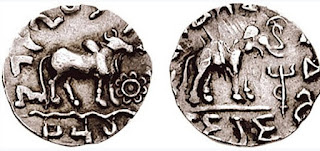Shiva is one of the most important gods in Hinduism and one of the godheads in the holy Trinity (trimurti) with Brahma and Vishnu. Shiva is one of the most complex gods of Hindus, represents goodness and benevolence, and serves as a protector. He is the Supreme Being in Shaivism. Shiva is also associated with Time, and in this capacity, he is both the destroyer and creator of all things.
In Hinduism, the universe is thought to regenerate in cycles (every 2,160,000,000 years). Shiva is the Supreme Lord who creates, protects and transforms the universe. Rudra, Mahadev, Shankar, Maheshwar, Bholenath, Natraj, Pashupati and Devendra are the other holy names of Shiva. Shiva is a pan-Hindu deity, revered widely by Hindus all across the world.
Interestingly, there are eight ancient Shiv temples constructed about 4,000 years ago by ancient architects in an era of no satellite technology or any GPS, which lie more or less on the same geographic longitude of 79 degrees east 41'54''.
. Kedarnath temple 79.0669 degrees
. Kalahashti temple 79.7037 degrees
. Ekambaranatha temple 79.7036 degrees
. Thiruvanamalai temple 79.0747 degrees
. Thiruvanaikaval temple 78.7108 degrees
. Chidambaran Natraj temple 79.6954 degrees
. Rameshwaram temple 79.3129 degrees
. Kaleshwaram temple 79.9067 degrees
It is pertinent to know that the distance between Kedarnath and Rameswaram is of 2383 kilometers.
The Sacred Meridian
There are several other sacred ancient temples on this meridian, which include the Five Kedars, or Panch Kedar temples to include Rudranath, Tunganath, Madamaheswar, Kalpeswar and Kedarnath temples.
Since ancient time symbols on coins are the representations of religious belief influenced from nature. Slowly these symbols took form of deities, which are worshipped throughout the Indian peninsula. Lord Shiva or the ''Rudra'' of the Rigveda, was first depicted on the seal of Indus Valley Civilization (3300-1300 BC) found in Mohenjo-Daro.
Thereafter, as the second urbanization took place and coinage appeared, Lord Shiva appeared on coins too.
As Ujjain is home to the the ''jyotirlinga'' of Lord Shiva called Mahakala. So, it's not surprising that a human like figure found on Ujjain coins is called Mahakaal, and the coins as Mahakala type. Copper coins issued during the reign of Vishnumitra/ Jishnumitra, depicted a human figure holding a spear in the left hand and kamandalu besides a tree in the railing. The reverse of both these coins depicts the double orb Ujjaini symbol.
The Kushan coinage depicted Lord Shiva with his different yet familiar attributes. Lord Shiva was titled as ''Osho'' on Kushan coinage. It is quite fascinating to study these coins that have different attires and attributes. It surely reflects the perception of Lord Shiva in that era.
Kushano-Sasanians, Hormizd 1. (265-295 AD),Dinar, gold, weight 7.7 gm, Obverse: Hormizd 1 standing front, head to left, wearing a lion head crown and lotus blossom, holding trident in his left hand and sacrificing over lighted altar with his right hand, trident in field to left and Tamgha in field to right, Reverse: Shiva standing facing with flaming hair, holding diadem in right hand and trident(Trishul) in left hand, behind, bull Nandi.
Kushano-Sasanian, Hormizd 1, (265-295 AD), bronze, weight 2.2 gm, Obverse: Draped bust of Hormizd 1 to right, wearing crown with decorated korymbos and a lion's head, Reverse: Shiva standing facing and holding trident (Trishul) in his left hand, behind him bull Nandi.
Some coins depict Lord Shiva and Goddess Parvati together. These coins are many, from the post Gupta era to coins of the Sangama dynasty and also coins minted by Haidar Ali, father of Tipu Sultan, the king of Mysore.
Like the coins of Haidar Ali and Vijaynagar, the Marathas of Tanjore also minted coins with Lord Shiva and Parvati.
Coins from Tripura issued by King Vijaya Manikya depicted a most philosophically respected and celebrated form of Lord Shiva known as ''Ardhanarishvara''. This coin depicted Lord Shiva with his consort indirectly.
There are a few coins that do not have a depiction of Lord Shiva in the form of an image, but his name is inscribed on these coins.
In Indian coinage, Lord Shiva is depicted and symbolized in various forms. These forms include a trident, ling, belpatra, crescent etc. For a dancer, he is Nataraja, for a student, he is Dhyutidhara, for a musician, he is Pranava etc.
Lord Shiva and Coins


















No comments:
Post a Comment
Any inputs or feedback is welcome!